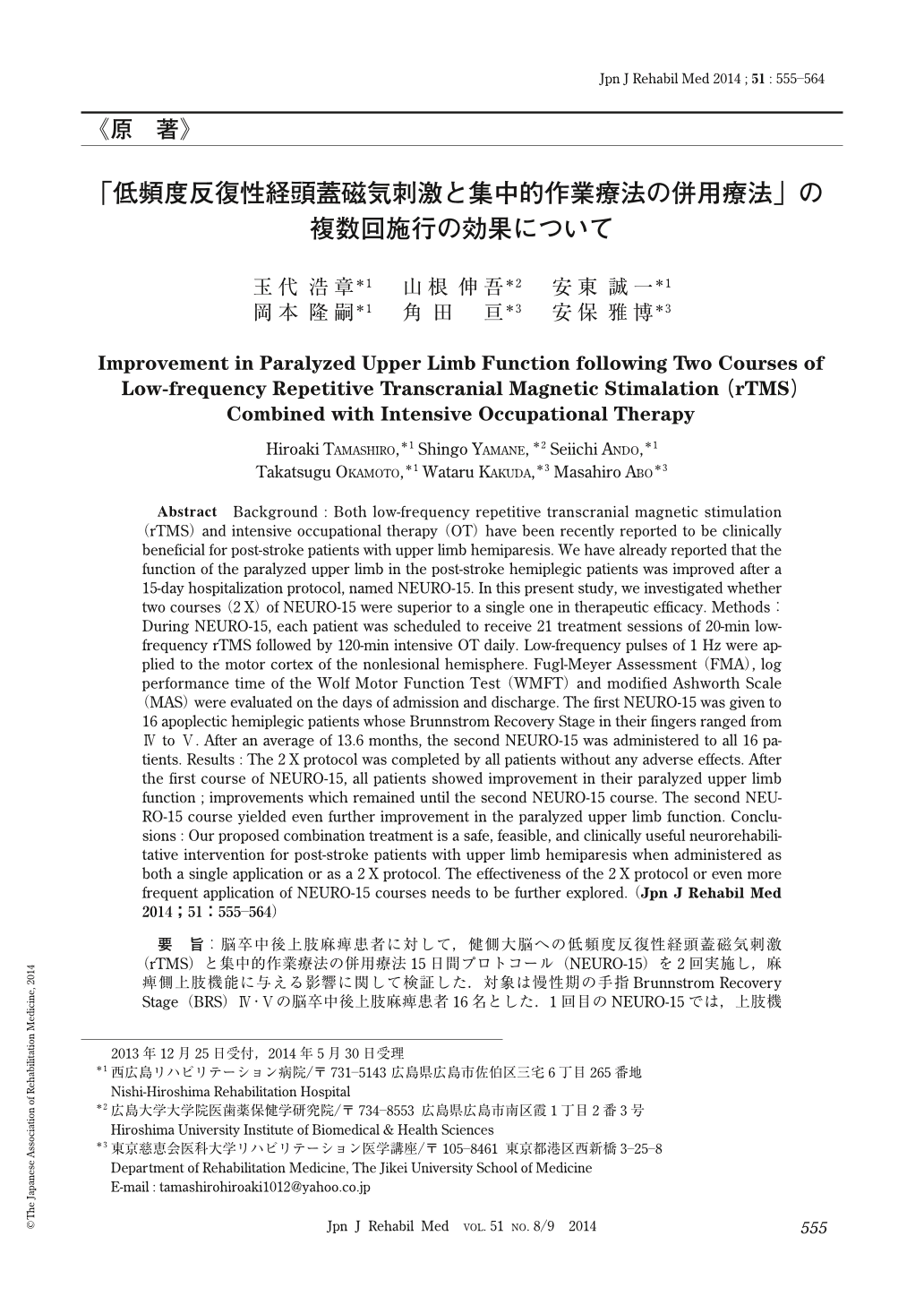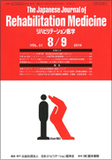Japanese
English
- 販売していません
- Abstract 文献概要
- 1ページ目 Look Inside
- 参考文献 Reference
要旨:脳卒中後上肢麻痺患者に対して,健側大脳への低頻度反復性経頭蓋磁気刺激(rTMS)と集中的作業療法の併用療法15日間プロトコール(NEURO-15)を2回実施し,麻痺側上肢機能に与える影響に関して検証した.対象は慢性期の手指Brunnstrom Recovery Stage(BRS)Ⅳ・Ⅴの脳卒中後上肢麻痺患者16名とした.1回目のNEURO-15では,上肢機能評価において有意な改善を示したため,これまでの報告と同様に,手指BRS Ⅳ・Ⅴの患者に対するNEURO-15は麻痺側上肢機能を改善させることが示された.また1回目のNEURO-15退院時から2回目のNEURO-15入院時までの平均13.6カ月の期間では,麻痺側上肢機能の改善効果は維持できていた.そして2回目のNEURO-15に関しては,再び上肢機能評価において有意な改善を示した.よって手指BRS Ⅳ・Ⅴの患者に対するNEURO-15は,2回行った際も,上肢麻痺の改善に有用であることが示唆された.このことにより,複数回のNEURO-15は,麻痺側上肢機能の段階的かつ持続的な改善に寄与できる可能性を有していることが考えられた.
Abstract Background : Both low-frequency repetitive transcranial magnetic stimulation (rTMS) and intensive occupational therapy (OT) have been recently reported to be clinically beneficial for post-stroke patients with upper limb hemiparesis. We have already reported that the function of the paralyzed upper limb in the post-stroke hemiplegic patients was improved after a 15-day hospitalization protocol, named NEURO-15. In this present study, we investigated whether two courses (2X) of NEURO-15 were superior to a single one in therapeutic efficacy. Methods : During NEURO-15, each patient was scheduled to receive 21 treatment sessions of 20-min low-frequency rTMS followed by 120-min intensive OT daily. Low-frequency pulses of 1 Hz were applied to the motor cortex of the nonlesional hemisphere. Fugl-Meyer Assessment (FMA), log performance time of the Wolf Motor Function Test (WMFT) and modified Ashworth Scale (MAS) were evaluated on the days of admission and discharge. The first NEURO-15 was given to 16 apoplectic hemiplegic patients whose Brunnstrom Recovery Stage in their fingers ranged from Ⅳ to Ⅴ. After an average of 13.6 months, the second NEURO-15 was administered to all 16 patients. Results : The 2X protocol was completed by all patients without any adverse effects. After the first course of NEURO-15, all patients showed improvement in their paralyzed upper limb function ; improvements which remained until the second NEURO-15 course. The second NEURO-15 course yielded even further improvement in the paralyzed upper limb function. Conclusions : Our proposed combination treatment is a safe, feasible, and clinically useful neurorehabilitative intervention for post-stroke patients with upper limb hemiparesis when administered as both a single application or as a 2X protocol. The effectiveness of the 2X protocol or even more frequent application of NEURO-15 courses needs to be further explored.

Copyright © 2014, The Japanese Association of Rehabilitation Medicine. All rights reserved.


